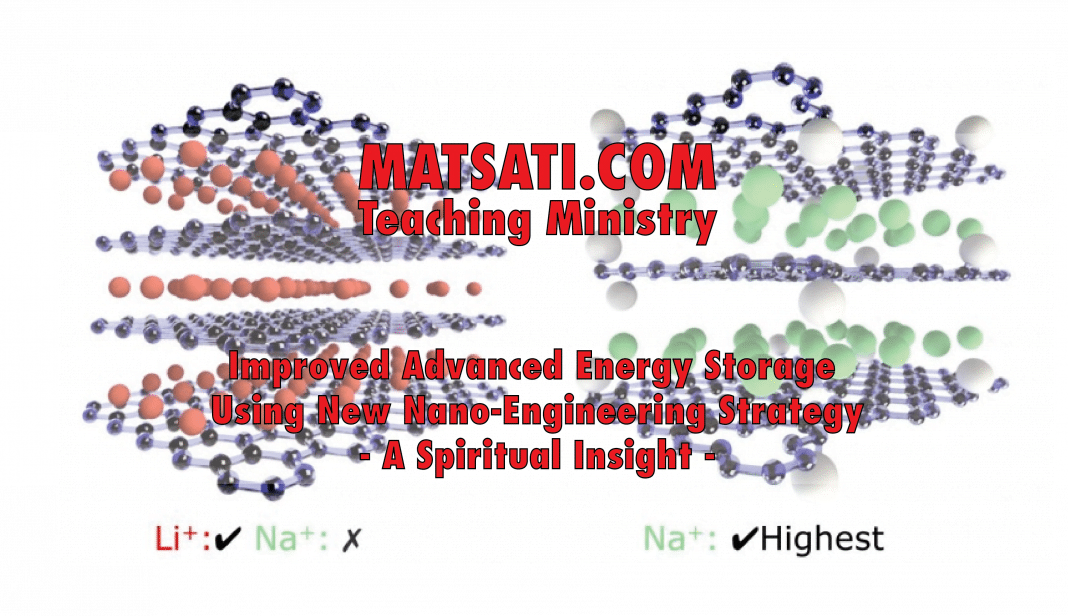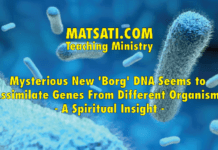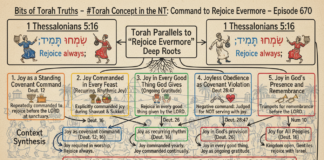Due to the increase in sources for renewable energy there is an ever increasing need for advanced stationary energy storage technology that is capable of both large scale production and high energy density (capacity). The current state of the art for energy storage is to use lithium-ion batteries which are a type of rechargeable battery. Lithium-ion batteries are commonly used for portable electronics and electric vehicles and are growing in popularity for military and aerospace applications. Some of the limitations to Li-ion batteries are the use of the Lithium itself when there are more abundant metallic elements available such as sodium (Na+), potassium (K+), zinc (Zn2+), and aluminum (Al3+). Recently, a new type of cathode is being developed at the University of Technology Sydney that was published in the Journal Nature Communications describing a strategy using interface strain engineering in a 2D graphene nanomaterial to produce a new type of cathode. [1] What is Strain engineering? Strain engineering is the process of tuning a material’s properties by altering its mechanical or structural attributes.
References
- Pan Xiong, Fan Zhang, Xiuyun Zhang, et. al., “Strain engineering of two-dimensional multilayered heterostructures for beyond-lithium-based rechargeable batteries,” 3 July 2020, Nature Communications. DOI: 10.1038/s41467-020-17014-w
There are other elements on the periodic table that have similar chemistries to lithium and are being investigated, including sodium ion batteries, potassium ion batteries, zinc ion batteries, and aluminum ion batteries. These elements have great potential and energy density as compared to the Li-ion batteries. The limiting factor that is impeding the continued development and use of these alternative batteries is due to the lack of suitable electrode materials.
The use of strain engineering the structural attributes of a material, in chemistry, intercalation is the reversible inclusion or insertion of a molecule (or ion) into materials with layered structures. Examples are found in graphite and transition metal dichalcogenides. One famous intercalation host is graphite, which intercalates potassium as a guest. Intercalation expands the van der Waals gap between sheets because of the size of the ion, which requires energy. Usually this energy is supplied by charge transfer between the guest and the host solid, for example via redox. For example, two potassium graphite compounds are KC8 and KC24. However, in the case of Carbon fluorides [(CF)x and C4F], they are prepared by reaction of fluorine with graphitic carbon. The bond between the carbon and fluorine atoms are covalent, thus fluorine is not intercalated. Such materials have been considered as a cathode in various lithium batteries. This latest research [1] demonstrates a new type of zero-strain cathodes for reversible intercalation using (Na+, K+, Zn2+, Al3+)-ions as opposed to Li-ions, through interface strain engineering of a 2D multilayered VOPO4-graphene heterostructure. When this material is applied as cathodes in K+-ion batteries, it is possible to achieve a high specific capacity of 160 mA h per gram and a large energy density of ~570 W h per kg, presenting the best reported performance to date. The two dimensional multilayered heterostructured material may also be extended as cathodes for high-performance Na+, Zn2+, and Al3+-ion batteries as well. The researchers say this world offers a promising technology to use strain engineering of 2D materials for advanced energy storage applications. Strain engineering refers to a general strategy employed in semiconductor manufacturing to enhance device performance. Performance benefits are achieved by modulating strain in the transistor channel, which enhances electron mobility (or hole mobility) and thereby conductivity through the channel. Epitaxial strain in thin films generally arises due to lattice mismatch between the film and its substrate, and can arise either during film growth or due to thermal expansion mismatch. Tuning this epitaxial strain can be used to moderate the properties of thin films and induce phase transitions. This strategy of strain engineering is being extended to nanomaterials for the design and manufacturing of electrodes to be used with these alternative ions-(Na+, K+, Zn2+, Al3+) in batteries taking energy storage to new limits and applications beyond what we currently have in lithium ion technology and chemistry.
The Spiritual Insights that we receive from this type of research is related to the strain engineering technology when ions are introduced through intercalation, the expansion of the van der Waals spacing due to the ion size, and using the different size modulating the strain enhances the electron mobility. The parallel we find in the scientific research is related to something we observe in the Hebrew bible! The Hebrew bible describes the Lord God created the generations of the heavens and the earth in the Torah in Bereshit / Genesis 2:4.
Bereshit / Genesis 2:4
ד אֵלֶּה תוֹלְדוֹת הַשָּׁמַיִם וְהָאָרֶץ בְּהִבָּרְאָם בְּיוֹם עֲשֹוֹת יְהוָֹה אֱלֹהִים אֶרֶץ וְשָׁמָיִם: 2:4 This is the account of the heavens and the earth when they were created, in the day that the Lord God made earth and heaven.
Here we see the word for “generations” in Hebrew is spelled toldot (תוֹלְדוֹת). This sentence in the Torah speaks about the created life that God had made on the earth prior to the fall of Adam and Eve into disobedience (sin). This word for generations (toldot, תוֹלְדוֹת) is spelled in its full form with all of its letters. While reading the Torah, following Adam and Eve falling into disobedience, we see this word being spelled in a defective form תלדות with a missing letter vav.
What is interesting is how the scientific research speaks of strain engineering with graphene using various ions Na+, K+, Zn2+, Al3+, etc. These ions have a large ionic radius, they cause strain in the graphene layers, and produce properties that are uniquely suited for their particular application. Here in the Hebrew text, the vav before the fall of man appears to function in a similar fashion, the word for “generations” toldot (תוֹלְדוֹת) has a vav describing a particular property of creation that changed after the fall of man into sin. Following the fall, we find this vav being removed from the word toldot. This defective spelling is something the rabbis noticed and commented upon in Midrash Rabba on Shemot / Exodus 30. As we read through the Hebrew bible, beyond the Torah, this word continues to be spelled defectively up until the book of Ruth 4:18.
Ruth 4:18
וְאֵלֶּה תֹּולְדֹות פָּרֶץ פֶּרֶץ הֹולִיד אֶת־חֶצְרֹֽון׃ 4:18 Now these are the generations of Perez: to Perez was born Hezron,
Midrash Rabbah describes what is happening in the text is evidence that the coming Messiah would herald a new creation for all of humanity. In all of the Tanakh (Torah, Neviim, Ketuvim) there are only two places where we see this restored spelling, in Bereshit / Genesis 2:4 and in Ruth 4:18. This leads to the question of what might be the connection between the creation of the heavens and the earth and the fall of mankind, and the family line of Perez?
In the book of Ruth, Perez is spelled Peretz (פֶּרֶץ). This world means “breach.”
פֶּרֶץ (n-m) heb
- breach, gap, bursting forth
- bursting forth, outburst
- breach
- broken wall
- outburst (fig. of God’s wrath)
(Source: מקור:Open Scriptures on GitHubCreator: יוצר:Based on the work of Larry Pierce at the Online Bible)
פֶּרֶץ (n-pr-m) x-pn
- Perez or Pharez = “breach”
- twin son with Zarah of Judah by Tamar and ancestor of two families of Judah, the Hezronites and Hamulites; from the Hezronites came the royal line of David.
(Source: מקור:Open Scriptures on GitHubCreator: יוצר:Based on the work of Larry Pierce at the Online Bible)
פֶּרֶץ עֻזָּא (n-pr-loc) x-pn
- Perez-uzza or Perezuzzah = “breach of Uzza”
- the place where Uzzah was slain by God for touching the Ark; located close to Jerusalem
(Source: מקור:Open Scriptures on GitHubCreator: יוצר:Based on the work of Larry Pierce at the Online Bible)
The use of the word Perez (פֶּרֶץ) in the Hebrew bible means breach. This suggests that the Lord God was going to “break through” something in regard to the families of man in order to restore what was lost from creation following the sin of Adam and Eve. Midrash Tanchuma Buber on Bereshit / Genesis 18:1 states the following concerning these verses:
Midrash Tanchuma Buber, Bereshit / Genesis 18:1
((Gen. 2:4:) THESE ARE THE GENERATIONS (toledot) OF HEAVEN AND EARTH WHEN THEY WERE CREATED. R. Berekhyah and R. Helbo said in the name of R. Samuel bar Nahman:45Sanh. 38b; Gen. R. 12:6; Exod. R. 30:3; Numb. R. 13:12; PR 46:2; Tanh., Gen. 1:6; Hasarot wlterot, fol. 37. Every toledot which is in the Torah lacks < a vowel letter > apart from two which are spelled in full. < The two are > (Ruth 4:18): THESE ARE THE GENERATIONS (toledot) OF PEREZ < and > (Gen. 1:4): THESE ARE THE GENERATIONS OF HEAVEN. Both of them are spelled in full. R. Judah bar Shallum the Levite said: Those < which lack a vowel letter number > six. R. Pinhas said in the name of R. Reuben: They correspond to the six things which < the Holy One > took away from the first Adam, and these are the following: (1) His facial luster, (2) his stature, (3) his life (i.e., his immortality), (4) the fruits of the earth, (5) the Garden of Eden, and (6) sun and moon. Where is it shown about his facial luster? Where it is stated (in Job 14:20): YOU CHANGE HIS FACE AND SEND HIM AWAY. Where is it shown about his stature?46Hag. 12a; cf. Gen. R. 19:8; Cant. R. 3:7:5; PRK 1:1; 5:3; PR 15:3. Where it is stated (in Ps. 139:5): YOU HAVE < RE > FORMED ME BEHIND AND BEFORE. Where is it shown about his life? Where death was decreed over him (in Gen. 2:17); [for, if he had been worthy], he would have remained alive forever. Where is it shown about the fruits of the earth? Where it is stated (in Gen. 3:17): CURSED IS THE LAND BECAUSE OF YOU. Where is it shown about the Garden of Eden? Where it is stated (in Gen. 3:24): AND HE DROVE OUT THE MAN. Where is it shown about sun and moon? Where it is stated (in Is. 13:10): THE SUN SHALL BE DARK AT ITS RISING AND THE MOON SHALL NOT CAUSE ITS LIGHT TO SHINE. In the world to come, however, the Holy One will restore {to him} [them]. [Where is it shown] about facial luster? Where it is stated (in Is. 61:9): ALL WHO SEE THEM SHALL ACKNOWLEDGE THEM, < THAT THEY ARE THE SEED WHICH THE LORD HAS BLESSED >. And where is it shown about his stature? Where it is stated (in Lev. 26:13):47Sifra, ad loc.; Sanh. 100a. AND I MADE YOU WALK WITH STATURE. R. Judah says: What is the meaning of STATURE? The time will come when each and every {upright} one [from Israel] will be a hundred cubits tall. R. Simeon ben Johay says: two hundred cubits, as stated (here): STATURE (qomemiyyut): Qom < ahmeans one stature of > a hundred; miyyut (read as me’ot, i.e., “hundreds”) < implies another > hundred.48Cf. Gen. R. 8:1). Ergo: two hundred. {And they would live forever?} [And where is it shown about his life?] Where it is stated (in Is. 65:22): AS LONG AS THE DAYS OF A TREE SHALL BE THE DAYS OF MY PEOPLE…. And where is it shown about the fruits of the earth?49See ySheq. 6:2 (50a); yTaan. 1:2 (64a). Where it is stated (in Ezek. 47:12): AND BY THE RIVER UPON ITS BANK ON BOTH SIDES [SHALL GROW EVERY TREE FOR FOOD. THEIR LEAF SHALL NOT WITHER, NEITHER SHALL THEIR FRUIT FAIL. THEY SHALL BRING FORTH NEW FRUIT EVERY MONTH]. Where is it shown about the Garden of Eden? Where it is stated (in Hos. 14:8 [7]): THOSE WHO DWELL IN HIS SHADOW SHALL BE TRANSFORMED. THEY SHALL GROW GRAIN AND BLOSSOM LIKE A VINE. Where is it shown about sun and moon? Where it is stated (in Is. 30:26): MOREOVER, THE LIGHT OF THE MOON SHALL BE AS THE LIGHT OF THE SUN, AND THE LIGHT OF THE SUN SHALL BE SEVENFOLD, AS THE LIGHT OF THE SEVEN DAYS. R. Aha said in the name of R. Hanina: The wound from the blow to the world will heal.
Those things that were lost due to man’s sin are listed by the rabbis as being six things, (1) His facial luster, (2) his stature, (3) his life (i.e., his immortality), (4) the fruits of the earth, (5) the Garden of Eden, and (6) sun and moon. The idea of the loss of the vav in the word toldot (תלדות) is said to be on a few levels that is related to the loss of immortality and the loss of facial luster as a reference to the glory God had given man at the creation. The fruits of the earth and the Garden of Eden refer to what is inherited. The letter vav represents man, and the first vav represents the first man Adam at creation. These things the rabbis point out in the sense of immortality and glory are paralleled to heaven, and the earthly things are referred to the fruits of the earth and the Garden of Eden. This may be abstracted from the first verse in the Torah from Bereshit / Genesis 1:1:
א בְּרֵאשִׁית בָּרָא אֱלֹהִים אֵת הַשָּׁמַיִם וְאֵת הָאָרֶץ
In Hebrew, the letter vav functions as a conjunction “and,” this is how we see its use in the first verse of the Torah on the heavens and the earth (הַשָּׁמַיִם וְאֵת הָאָרֶץ). Here we may conclude that man (the vav) was created to connect heaven and earth. Note how the first verse in the Hebrew bible draws out a very significant spiritual application of man being the bridge between heaven and earth. This illustrates how we are to live our lives as the children of God! The rabbis interpret the vav to be a picture of Mashiach who would descend from the generations (toldot) of Perez (פֶּרֶץ). Notice how the scientific research on materials design and strain engineering tends to draw these things out from the Hebrew text in the letter vav. There was something that was lost following the fall of mankind in sin, and there is something that is being restored by the Messiah. Just as the original vav was lost through sin, the vav is restored in the obedience of the Second Adam, the Messiah Yeshua! Notice how these reference to the first and second Adam, are a specific reference to obedience; The first Adam was the father of all men through the Flesh and disobeyed, and through him all of his progeny learned disobedience and inherited death, whereas the ‘second’ or ‘last’ Adam becomes the father of all men through the Spirit, and was perfect in obedience. This is a message of salvation that is being taught in the Torah, throughout the Scriptures (the Tanach), and on into the NT. Paul wrote “For as by the one man’s disobedience the many were made sinners, so by the one man’s obedience the many will be made righteous” (Romans 5:19) Notice how the NT description of Yeshua is that of being the “last Adam” or the “second Adam” coupled to what was spoken of by the rabbis in Midrash Tanchuma Buber, which states “death was decreed over him (in Bereshit / Genesis 2:17); [for, if he had been worthy], he would have remained alive forever.” Notice how life everlasting has been given to Yeshua through resurrection! By his obedience, he became a life-giving spirit, and by faith we inherit that spiritual nature in us. What a fantastic picture we get from the Scriptures and the Messiah according to the Torah!
Notice how much effort we must put into discerning these things from the Scriptures. While studying the Scriptures, we must keep in mind that the way of the Messiah is at many times hidden in the world. The reason being, it is a life of sacrifice, struggle, and humility that comes with seeking the God of Israel, who then gives us peace and joy through faith in His Messiah! What man esteems as important is not what God esteems as important. The Lord God Almighty uses what is low and humble, the weak, to display His glory and power in this world. This is why things are hidden, so we will seek after them, and seek the Lord God in heaven and His Messiah and humble ourselves while doing so! Yeshua told us that in order to be great in heaven, we must be willing to be the servant of all (see Mark 9:35). Those who truly love the Lord bringing glory to His name will not profane His name and will live in humility and proclaim all glory is due to the work of Yeshua the Messiah! This is why Paul wrote what he did saying, “God forbid that I should glory except in the cross of our Lord Jesus Christ, by whom the world is crucified unto me, and I unto the world.” (Galatians 6:14) We can learn a lot from the Hebrew Scriptures. Just as we are seeing here in the letter vav, the defective spelling of toldot (תלדות), and perez (פֶּרֶץ), what is being revealed to us is how the Lord God Almighty wants to break through into our lives in order to transform us into something new. This is the point of strain engineering, to transform some material to have a more useful property by the incorporation of various ions. Similarly, the Lord God wants to dwell in our midst, His Holy Spirit in our hearts through faith in Yeshua! This was the point and purpose of the death and resurrection and the work of the Messiah in our lives! Something was lost at the beginning, and now something is restored! We have a restored relationship with the God of Israel through faith in Yeshua Hamashiach!









